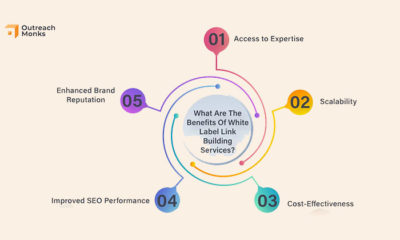Politics
The Pros and Cons of a 4-Day Workweek
Published
2 years agoon
By
Drew Simpson
Henry Ford’s five-day work week was seen in 1926 as a revolution when it gave his employees Saturdays off. How gracious of him, right? And a short time later, in 1932, the five-day week was officially codified for all workers in the United States. But, after a century of Ford’s “radical” idea — is the next workplace innovation the four-day workweek?
However, companies of all sizes have been tinkering with four-day work weeks worldwide. Down in New Zealand, consumer-goods corporation Unilever implemented a 12-month test run of a shorter work week. The four-day working week became a reality in Spain in March of 2021 after several dozen companies participated in a pilot project. Fundraising company Kickstarter will test the four-day work week with employees in 2022. Also, in 2022, home improvement retailer Lowe’s adopted a four-day workweek.
But that’s not all. Scotland, Iceland, Japan, Belgium, and the United Arab Emirates all have four-day workweek pilot programs in the works. Additionally, Democratic Congressman Mark Takano introduced legislation reducing the standard workweek from 40 to 32 hours here in the United States.
The world’s most extensive 4-day workweek trial run occurred in the U.K. in 2022.
All eyes are on the U.K.
To determine whether a similar model is possible and supported in the United States, over 3,300 workers and 70 British companies participated in the trial in the U.K.
According to Eagle Hill Consulting, 83% of respondents agreed that a four-day workweek would reduce burnout. In a Joblist survey, 94% of job seekers said they wanted a four-day workweek. But did the study back these claims up? Here’s what the study showed:
- According to 51% of employees, they can do their jobs to their fullest potential in 40 hours or less
- In 85% of the survey responses, respondents said it was logistically possible to work four days a week
- A 4-day workweek was cited as a benefit by 94% of respondents
- Approximately 28% of full-time employees would consider a four-day week in exchange for a pay cut
So far, so good. But is a four-day workweek really a good idea? Well, let’s weigh the pros and cons.
What is a Four-Day Workweek?
Before getting too far ahead of ourselves, let’s have a brief rundown on what exactly a four-day workweek is.
You could work 32 hours with a four-day workweek without losing productivity, pay, or benefits. There might be a Monday-through-Thursday work week with Fridays off — depending on the industry and the company. Alternatively, each employee could choose their third day off, or the company could have a third different day off policy on Mondays or Wednesdays.
Both options have their pros and cons. When everyone works at the same time, collaborative work is enhanced. But the company will be unstaffed when most others are. Individual employees may prefer a flexible third day off, but teams may struggle with it.
It may seem unorthodox to work a four-day week. Over the last century, however, we have gradually reduced the number of hours worked per week.
In 1890, a full-time employee within a manufacturing plant worked an average of 100 hours per week, according to the United States government. But, by the mid-20th century, manufacturing employees were on average working 40 hours a week. So, as radical as it may seem, reducing our current work week to 28 hours is not as drastic as it may seem.
The Pros of a Four-Day Workweek
In a report in The Atlantic, people who work a four-day week say they’re healthier, happier, and less stressed. As a result, their employers report that their employees are more productive and focused. In addition, 94% of employees have a positive sense of well-being when they feel their employer cares about them. Also, according to research, it is best not to work intensively for more than four hours per day.
Some of the most significant advantages of a four-day work week are as follows.
Increased productivity.
The relationship between productivity and hours worked was studied by Sanford University. It was found that those who work an overworked schedule are actually less productive than those with a regular work schedule.
During a trial study conducted by a New Zealand company, Perpetual Guardian, four-day work weeks were tested. In addition to maintaining their productivity levels, employees improved their job satisfaction, teamwork, work/life balance, and loyalty to the company. There was also a decrease in stress from 45% to 38% of employees.
Norway, Denmark, Germany, and the Netherlands, along with some of the world’s most productive countries, work on average 27 hours a week, the same hours suggested for a four-day work week in the U.K. In contrast, Japan, a country notorious for overworked employees, ranks 20th out of 35 countries in terms of productivity. In fact, Japan’s four-day workweek experiment led to a 40% increase in productivity.
Physical and mental well-being is improved.
Several positive side effects are reported by employees who work fewer days per week. Whether it’s exercising more, finishing a Master’s program earlier, volunteering more, or maintaining a healthy work-life balance, these measures can help. In turn, this contributes to a worker’s increased productivity. “I like to take walks … just wander and let my brain breathe,” Natalie Nagele, Wildbit CEO, told The Atlantic.
A more balanced life leads to less stress for parents with children. In addition, they spend more time with their families. In addition, caregivers of aging parents have the opportunity to help them. “One of the biggest factors in people’s level of work-family satisfaction is the pure number of work hours they have,” Melissa Milkie, a sociologist at the University of Toronto who studies time use, told The Atlantic. “So cutting it is huge … It would re-balance things for working families.”
“I can enjoy my weekend now because I’ve got my Friday for my chores and my other bits and pieces or… if I want to take my mum out for a walk, I can do that now without feeling guilty, Lisa Gilbert, a lending services manager at Charity Bank, told CNN Business.
In addition to caring for her son and two elderly parents, Gilbert gets an extra day off a week, which allows her to spend more time with them.
“I find that I’m saying ‘yes we can as opposed to ‘no, sorry we can’t,’” she said.
Enhanced motivation.
A compressed or reduced 4-day workweek can motivate your employees. As with any other benefit, it’s perceived as a way for the company to support its employees both on and off the clock.
Moreover, the rarity of these programs may encourage your staff to work hard to earn them or keep them.
It has improved employee engagement.
Employees are more likely to be satisfied and committed if they have four days off each week. They have enough time to rest and recover, which allows them to return to work feeling ready to take on new responsibilities.
A study conducted by Sweden in 2015-2017 investigated the effects of shorter work weeks on nurses. Nurses were working solely six hours a day and five days a week. Results showed nurses logged fewer sick days, reported better health, and engaged patients 85% more.
Reduced costs.
Over half, 51%, of business leaders surveyed by Henley Business School reported savings on facilities and utilities, and almost two-thirds reported increased productivity.
Downtime is reduced.
Employees have that extra day off during traditional business hours to schedule personal needs. As a result, they can make doctor’s and other appointments on their regular day off without taking time away from work. According to the same study, 62% of business leaders report that fewer sick days are taken.
We have increased employee attraction and retention.
It has been reported that job postings listing four-day workweeks have tripled within the last five years. Post-pandemic challenges may make this trend continue. As the competition for talent surges, top job seekers are looking for the best potential opportunities.
Furthermore, focusing on wellness and avoiding burnout is key to retaining employees. In a 2020 Gallup poll of over 10,000 workers, workers who worked a 4-day week reported the lowest level of job burnout. Among employees with a four-day work week, 63% reported thriving wellbeing.
A smaller carbon footprint.
In countries with shorter working hours, the carbon footprint is typically smaller. Consequently, reducing our work week from 5 to 4 days could also have environmental benefits. In addition, the shorter working week eases employee commutes and means large office buildings spend less time unused.
Utah’s state government employees showed a significant environmental impact from reducing work week length from five to four days through a compressed work schedule during a trial conducted in the state. Over $1.8 million was saved in energy costs due to closing the large office building on Fridays. In addition, the state estimates it could save 12,000 metric tons of CO2 by working one day less a week, equivalent to removing 2,300 cars from the road for one year.
The Cons of a Four-Day Workweek
It is true that a four-day work week has many benefits. But there are also a few disadvantages that shouldn’t be ignored. For example, the study involving Swedish nurses found that the project wasn’t cost-effective in the long run.
There is a cost.
Some argue that recruiting employees would be expensive with a four-day work week. In the U.S., as in other countries, employers offer full-time employees more than just their annual salary. They also throw in benefits like pensions and health insurance. As a result, employers may not be able to hire more employees to cover the reduced number of working hours.
Additionally, many workers in many countries prefer working fewer days a week – or fewer hours – in return for a higher salary. YouGov and HuffPost surveyed approximately 50% of American workers in 2014 and found that they would work an additional day a week for 20% more pay. Part-time workers were even more likely to make the trade.
It decreased customer satisfaction.
Despite providing some great environmental results and employer and employee benefits, the Utah study closed due to unsatisfactory customer feedback. Due to government offices being closed on Fridays, customers complained they couldn’t access government services.
However, companies can improve customer satisfaction by using technology, such as chatbots and AI-powered websites. How? By allowing customers another avenue for support instead of relying solely on employees.
Not everyone can participate.
A four-day work week is challenging to implement for some industries that require 24/7 availability. A four-day work week, for example, may make it difficult for your business to manage customer service problems.
Companies must deal with problems during the weekday and weekends regardless of the industry. However, planning and forethought are required to cover every aspect of the business during the workday.
Scheduling conflicts.
Compressing the workweek may be complicated by the need for your team to assist customers or other team members. Furthermore, this can make finding appropriate coverage during working hours a chore.
Additionally, internal scheduling may cause problems in managing client needs. For example, scheduled meetings can be planned in advance in the workweek. On the other hand, impromptu or emergency meetings might be more problematic.
Also, when employees who are off cannot attend brainstorming sessions, there may be limited input. How often these events occur in an organization may determine whether a 4-day workweek is feasible.
Workers may still put in the same amount of time.
In some cases, reducing hours may not be feasible for specific jobs. For example, one experiment in France found that workers put in the same number of hours regardless of the four-day work week. So what’s the only difference? Overtime costs were added to the company’s expenses.
Added stress.
There’s nothing better than a 3-day weekend, is there? Businesses usually structure their 4-day week this way (Mondays and Fridays off). To maintain that benefit, you will have to work harder during your ‘on’ days to ensure you don’t lose your ‘off’ days.
Most employees surveyed said a four-day week helped them maintain a work/life balance. So having a flexible schedule is a plus. But if the work portion adds more stress, it might not be worth it.
Should You Adopt a Four-Day Workweek?
There are many advantages to condensing workweeks, such as increased productivity and more time to pursue personal interests. But, at the same time, some industries, businesses, or individuals don’t work well with a four-day schedule. In addition, it won’t magically fix toxic workplaces or unpleasant jobs.
The COVID-19 pandemic has led to a reevaluation of work worldwide, which has increased interest in four-day workweeks. As a result, we must adjust our mindset and culture to make it the new normal, deemphasize work, and examine work activities that can be automated, deprioritized, and eliminated.
However, if you want to give a four-day workweek a try, consider the following strategies:
- Clearly define your goals
- Make sure your goals are achievable within a shorter work week
- Tasks should be prioritized and reevaluated
- Work asynchronously
- Keep interruptions and distractions to a minimum
- Don’t measure hours, measure outcomes
- Automate more tasks
- Create a culture that emphasizes human creativity
- Work-based social events should be limited
- Meetings should be reduced and shortened
- Pay employees as usual
- Regularly solicit feedback from employees
- Don’t micromanage your team
- Experiment and learn from your mistakes
Published First on Calendar. Read Here.
Featured Image: Photo by Tim Douglas; Pexels; Thank you!
Calendar
We are Calendar, trying to make the world a much more productive place. Check us out online at https://www.calendar.com.
You may like
-


Exploring the Pros and Cons of Private Label Backlinks
-


The Pro and Cons of Real Estate Investing: What You Need To Know
-


Should I Buy Amazon Stock After the Split? What 3 Pros Say
-


Security pros eviscerate Apple’s controversial phone-scanning plan in new paper
-


The Pros and Cons of Cold Calling and How to Do it Right – ReadWrite
Politics
Fintech Kennek raises $12.5M seed round to digitize lending
Published
6 months agoon
10/11/2023By
Drew Simpson
London-based fintech startup Kennek has raised $12.5 million in seed funding to expand its lending operating system.
According to an Oct. 10 tech.eu report, the round was led by HV Capital and included participation from Dutch Founders Fund, AlbionVC, FFVC, Plug & Play Ventures, and Syndicate One. Kennek offers software-as-a-service tools to help non-bank lenders streamline their operations using open banking, open finance, and payments.
The platform aims to automate time-consuming manual tasks and consolidate fragmented data to simplify lending. Xavier De Pauw, founder of Kennek said:
“Until kennek, lenders had to devote countless hours to menial operational tasks and deal with jumbled and hard-coded data – which makes every other part of lending a headache. As former lenders ourselves, we lived and breathed these frustrations, and built kennek to make them a thing of the past.”
The company said the latest funding round was oversubscribed and closed quickly despite the challenging fundraising environment. The new capital will be used to expand Kennek’s engineering team and strengthen its market position in the UK while exploring expansion into other European markets. Barbod Namini, Partner at lead investor HV Capital, commented on the investment:
“Kennek has developed an ambitious and genuinely unique proposition which we think can be the foundation of the entire alternative lending space. […] It is a complicated market and a solution that brings together all information and stakeholders onto a single platform is highly compelling for both lenders & the ecosystem as a whole.”
The fintech lending space has grown rapidly in recent years, but many lenders still rely on legacy systems and manual processes that limit efficiency and scalability. Kennek aims to leverage open banking and data integration to provide lenders with a more streamlined, automated lending experience.
The seed funding will allow the London-based startup to continue developing its platform and expanding its team to meet demand from non-bank lenders looking to digitize operations. Kennek’s focus on the UK and Europe also comes amid rising adoption of open banking and open finance in the regions.
Featured Image Credit: Photo from Kennek.io; Thank you!
Radek Zielinski
Radek Zielinski is an experienced technology and financial journalist with a passion for cybersecurity and futurology.
Politics
Fortune 500’s race for generative AI breakthroughs
Published
6 months agoon
10/11/2023By
Drew Simpson
As excitement around generative AI grows, Fortune 500 companies, including Goldman Sachs, are carefully examining the possible applications of this technology. A recent survey of U.S. executives indicated that 60% believe generative AI will substantially impact their businesses in the long term. However, they anticipate a one to two-year timeframe before implementing their initial solutions. This optimism stems from the potential of generative AI to revolutionize various aspects of businesses, from enhancing customer experiences to optimizing internal processes. In the short term, companies will likely focus on pilot projects and experimentation, gradually integrating generative AI into their operations as they witness its positive influence on efficiency and profitability.
Goldman Sachs’ Cautious Approach to Implementing Generative AI
In a recent interview, Goldman Sachs CIO Marco Argenti revealed that the firm has not yet implemented any generative AI use cases. Instead, the company focuses on experimentation and setting high standards before adopting the technology. Argenti recognized the desire for outcomes in areas like developer and operational efficiency but emphasized ensuring precision before putting experimental AI use cases into production.
According to Argenti, striking the right balance between driving innovation and maintaining accuracy is crucial for successfully integrating generative AI within the firm. Goldman Sachs intends to continue exploring this emerging technology’s potential benefits and applications while diligently assessing risks to ensure it meets the company’s stringent quality standards.
One possible application for Goldman Sachs is in software development, where the company has observed a 20-40% productivity increase during its trials. The goal is for 1,000 developers to utilize generative AI tools by year’s end. However, Argenti emphasized that a well-defined expectation of return on investment is necessary before fully integrating generative AI into production.
To achieve this, the company plans to implement a systematic and strategic approach to adopting generative AI, ensuring that it complements and enhances the skills of its developers. Additionally, Goldman Sachs intends to evaluate the long-term impact of generative AI on their software development processes and the overall quality of the applications being developed.
Goldman Sachs’ approach to AI implementation goes beyond merely executing models. The firm has created a platform encompassing technical, legal, and compliance assessments to filter out improper content and keep track of all interactions. This comprehensive system ensures seamless integration of artificial intelligence in operations while adhering to regulatory standards and maintaining client confidentiality. Moreover, the platform continuously improves and adapts its algorithms, allowing Goldman Sachs to stay at the forefront of technology and offer its clients the most efficient and secure services.
Featured Image Credit: Photo by Google DeepMind; Pexels; Thank you!
Deanna Ritchie
Managing Editor at ReadWrite
Deanna is the Managing Editor at ReadWrite. Previously she worked as the Editor in Chief for Startup Grind and has over 20+ years of experience in content management and content development.
Politics
UK seizes web3 opportunity simplifying crypto regulations
Published
6 months agoon
10/10/2023By
Drew Simpson
As Web3 companies increasingly consider leaving the United States due to regulatory ambiguity, the United Kingdom must simplify its cryptocurrency regulations to attract these businesses. The conservative think tank Policy Exchange recently released a report detailing ten suggestions for improving Web3 regulation in the country. Among the recommendations are reducing liability for token holders in decentralized autonomous organizations (DAOs) and encouraging the Financial Conduct Authority (FCA) to adopt alternative Know Your Customer (KYC) methodologies, such as digital identities and blockchain analytics tools. These suggestions aim to position the UK as a hub for Web3 innovation and attract blockchain-based businesses looking for a more conducive regulatory environment.
Streamlining Cryptocurrency Regulations for Innovation
To make it easier for emerging Web3 companies to navigate existing legal frameworks and contribute to the UK’s digital economy growth, the government must streamline cryptocurrency regulations and adopt forward-looking approaches. By making the regulatory landscape clear and straightforward, the UK can create an environment that fosters innovation, growth, and competitiveness in the global fintech industry.
The Policy Exchange report also recommends not weakening self-hosted wallets or treating proof-of-stake (PoS) services as financial services. This approach aims to protect the fundamental principles of decentralization and user autonomy while strongly emphasizing security and regulatory compliance. By doing so, the UK can nurture an environment that encourages innovation and the continued growth of blockchain technology.
Despite recent strict measures by UK authorities, such as His Majesty’s Treasury and the FCA, toward the digital assets sector, the proposed changes in the Policy Exchange report strive to make the UK a more attractive location for Web3 enterprises. By adopting these suggestions, the UK can demonstrate its commitment to fostering innovation in the rapidly evolving blockchain and cryptocurrency industries while ensuring a robust and transparent regulatory environment.
The ongoing uncertainty surrounding cryptocurrency regulations in various countries has prompted Web3 companies to explore alternative jurisdictions with more precise legal frameworks. As the United States grapples with regulatory ambiguity, the United Kingdom can position itself as a hub for Web3 innovation by simplifying and streamlining its cryptocurrency regulations.
Featured Image Credit: Photo by Jonathan Borba; Pexels; Thank you!
Deanna Ritchie
Managing Editor at ReadWrite
Deanna is the Managing Editor at ReadWrite. Previously she worked as the Editor in Chief for Startup Grind and has over 20+ years of experience in content management and content development.
